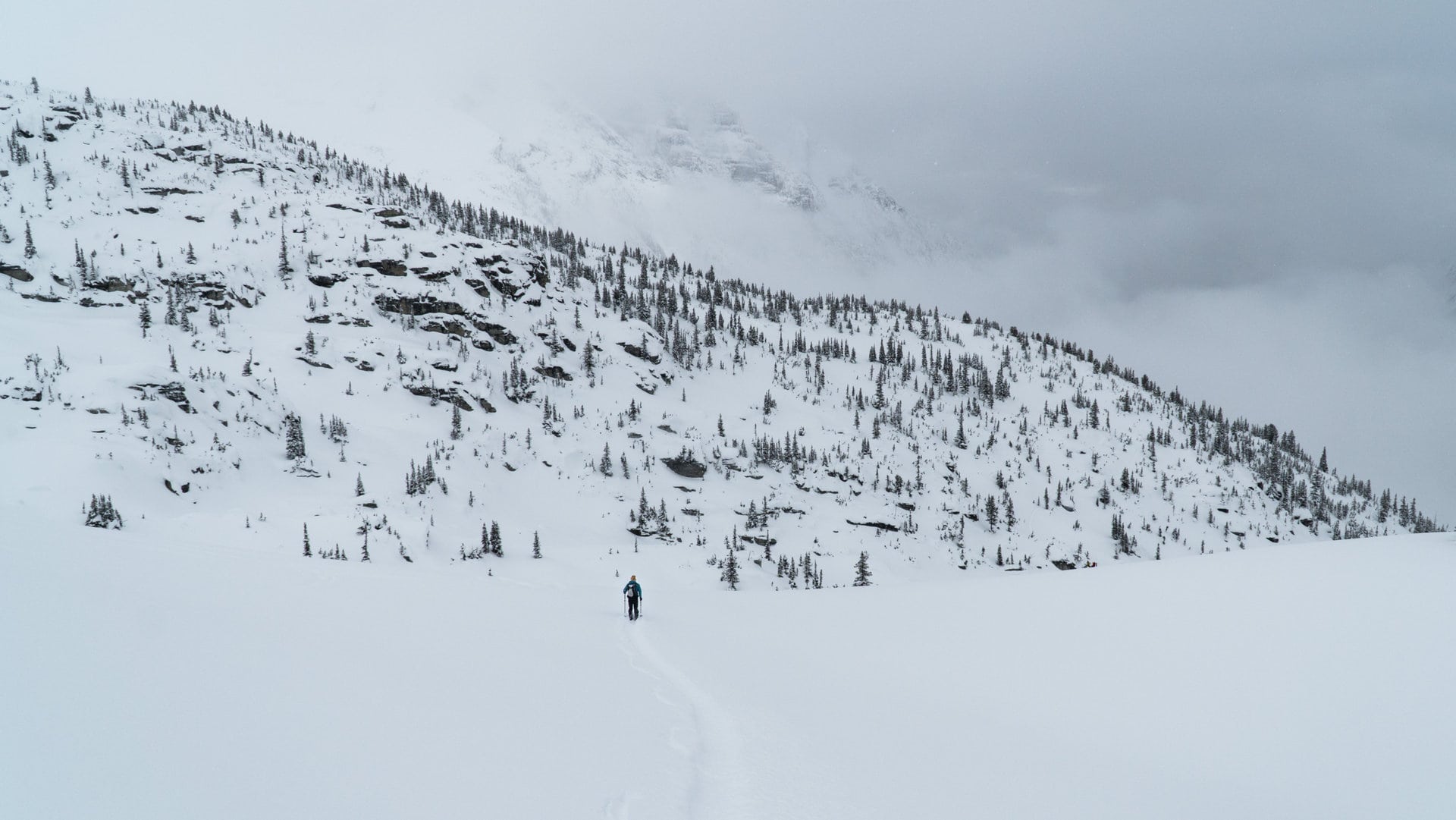During the shoulder season, you find yourself daydreaming regularly of ski touring through our vast backcountry wilderness. You’re longing for those legendary alpine epics – glorious scenery, bluebird days and chest-deep snow. But the truth is: you live in British Columbia and a good chunk of our fantastic skiing is located in a literal rainforest. When it snows a bunch, as it reliably does all winter long, the weather is most likely not conducive to those wild jaunts in the alpine… unless you enjoy whiteout days and jumping in crevasses. Instead, you stick to storm skiing in the perfectly spaced-out forests of Rogers Pass, giving you decent depth perception. This makes a whole lot more sense when the clouds roll in and the weather hits hard. I’ve taken the liberty of pointing out below the best storm skiing in Rogers Pass (Glacier National Park). Now, this is highly subjective – feel free to make up your own list as you rack up the days in the area.
Some routes are located within a Winter Restricted Area (WRA) governed by the Winter Permit System. Please check the WRA status before travelling through it.
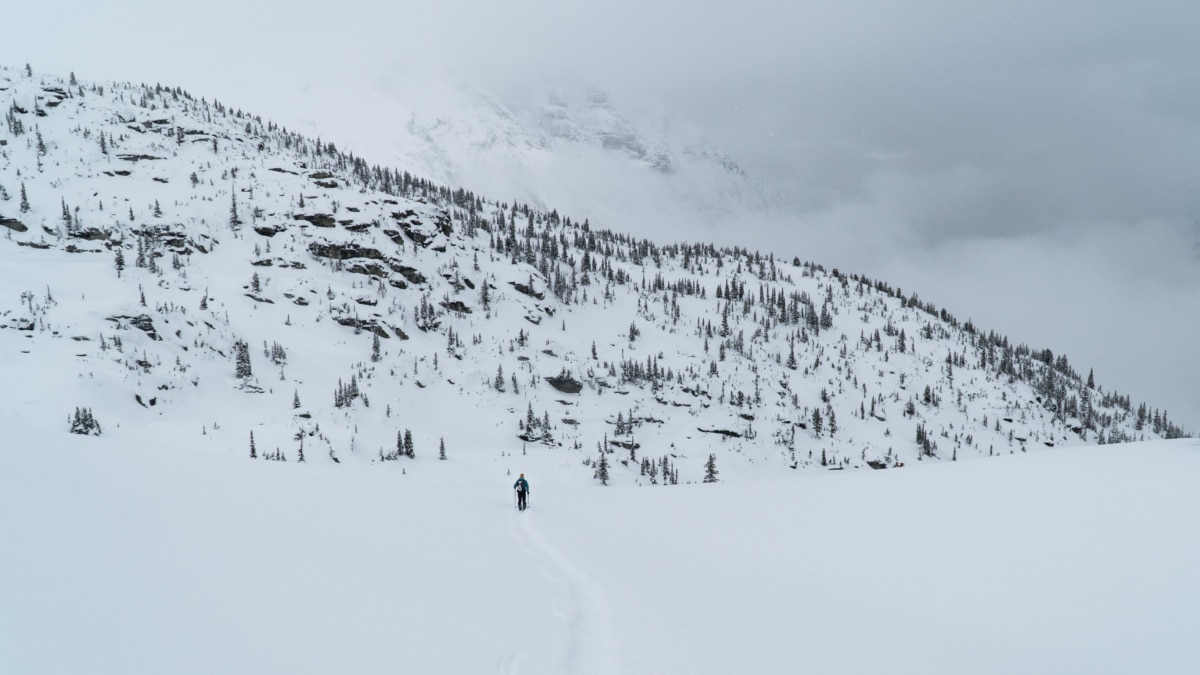
6. Puff Daddy
Puff Daddy, located on the Grizzly Shoulder, offers some of the best storm skiing in Rogers Pass. The route forms a large part of the east arm of Grizzly Mountain harbouring some of the best falline skiing of Rogers Pass, topped with endless pillow lines and quality tree skiing throughout. Right from the top, Puff Daddy gives you the choice of splitting off into three distinct gullies, some more technical than others, or going down the main face to the east. Given how convoluted the terrain is, it’s incredibly easy to stumble on unskiable cliffs and dangerous pillow fields. Moreover, the east slope is made up of large convex rolls that are prime avalanche terrain. It’s best to consider Puff Daddy when the avalanche hazard isn’t through the roof – hence why I only rank it at #6 on my list when it comes to storm skiing. On a good day, you can lap the 900m run twice since it’s so close to the Rogers Pass Discovery Center, aka the main parking lot.
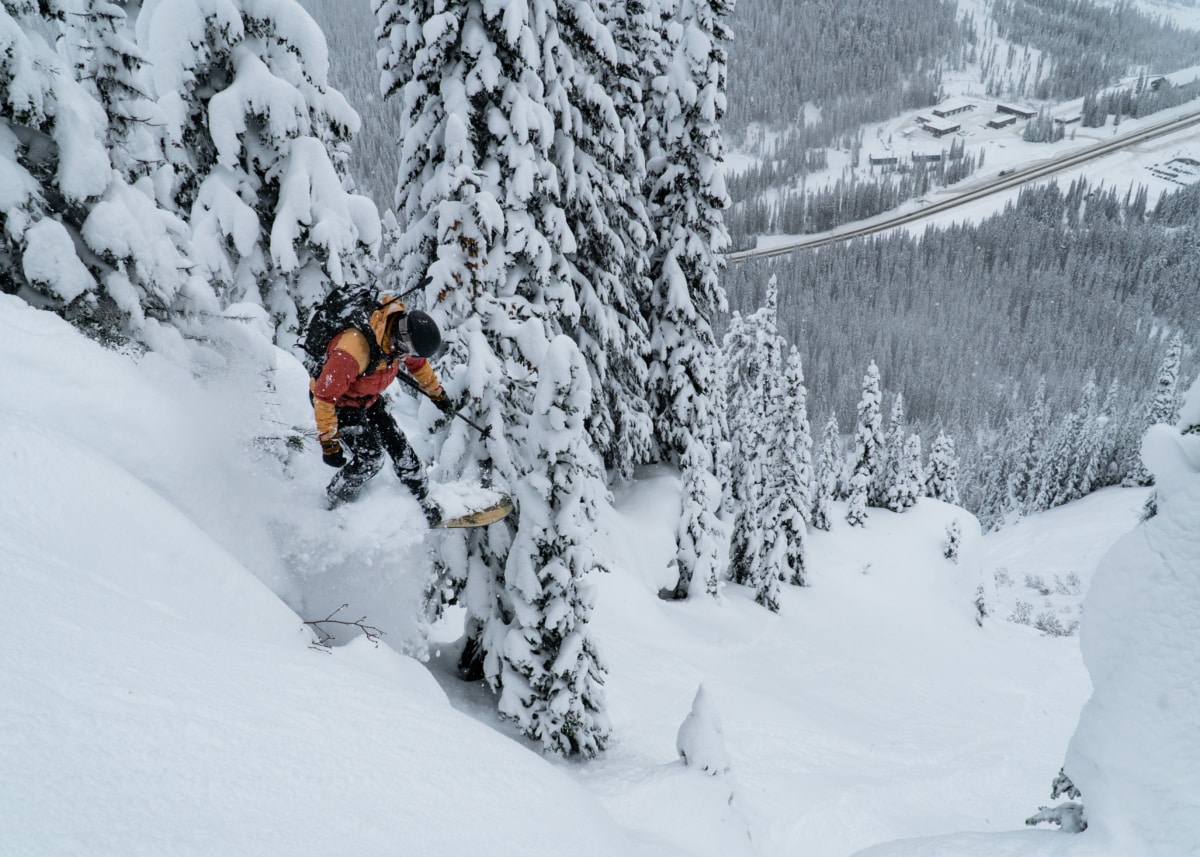
5. Christiana Glades
Most folks overlook the Christiana Glades in favour of the popular McGill Shoulder. And, they are missing out! The Christiana Glades offers world-class, perfectly spaced-out tree skiing on a rather gentle grade. When the avalanche conditions are less than friendly (as they are often when it snows), it’s easy enough to carve out a conservative uptrack through the trees. Some people would see this run as overly boring but really it’s not. Thrill seekers can certainly seek out awesome pillow lines and natural booters. Keep in mind the Christiana Glades are located close to a Winter Prohibited Area.

4. Corbin Pass
Corbin Pass is a truly accessible ski touring destination, directly off Highway 1, at the western boundary of Glacier National Park (Rogers Pass). And it makes for awesome storm skiing when the conditions are right. Generally speaking, the zone starts at the low elevation of 900m, but the good skiing starts at 1100m and tops out at 2032m next to heli-skiing landing flags. You’ll need steady snowfall below that to fully enjoy this 1000-meter line. Where it truly shines: the cut block skiing. The route takes you through some previously clear-cut areas littered with stumpy booters and classic pillow lines. If you know where you’re going, you can access one of Selkirk Tangiers Heli Skiing‘s best ski lines. If you know, you know!

3. McGill Main Chutes
The McGill Main Chutes, located on the aptly named McGill Shoulder, is an absolute gem of the Bostock Area. It’s one of the finest storm skiing spots in Rogers Pass. The ascent follows the sheltered McGill Glades along the McGill Shoulder which offers a super conservative uptrack until you reach treeline. It’s worth noting accessing the McGill Main Chutes involves crossing several active slidepaths, exposing your group to serious hazards. It must only be attempted during periods of decent stability. The reward: 800m of incredible avalanche path skiing topped with booters and flanked by some quality tree skiing. A word of advice, don’t blow past the Bostock Summer Trail. Otherwise, you’ll end up with rather wet skis in the Bostock Creek. It’s easy enough to miss it while you’re having the best time of your life!
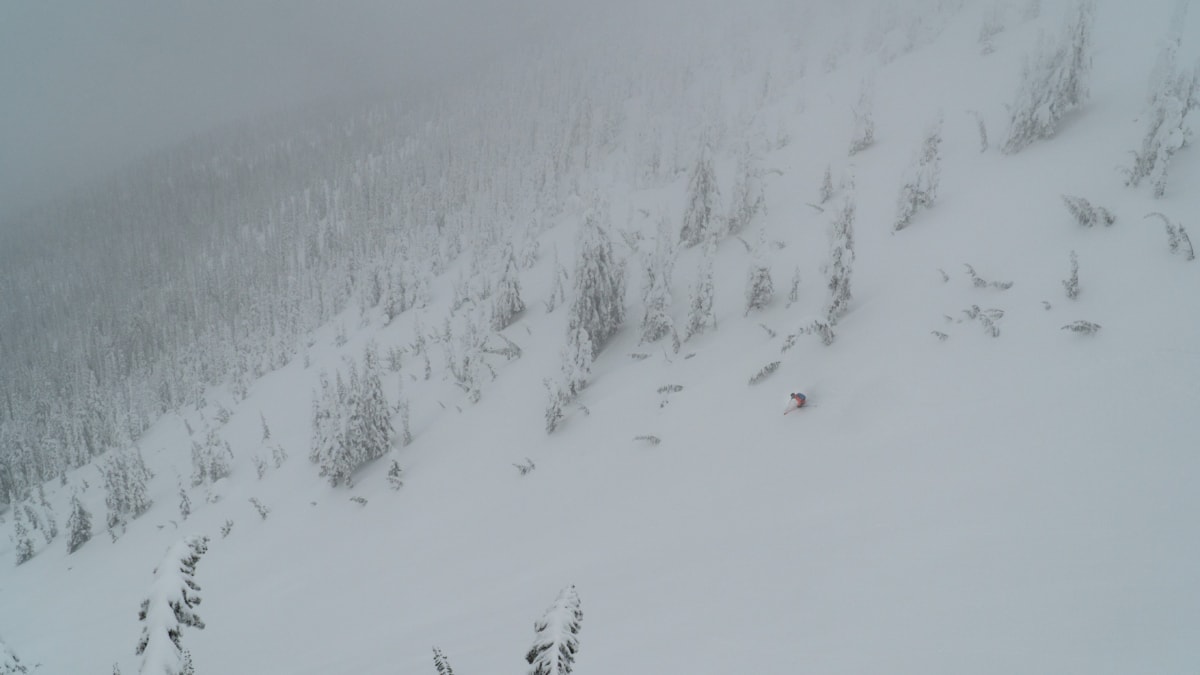
2. Macdonald West Shoulder
The MacDonald West Shoulder, otherwise known as the NRC Slopes or Gully, tops many of my lists. Sure the ascent is nothing to write home about, but the skiing is of such quality for how easy it is to get up it. It’s manageable enough to do several laps in a day. Whether the avalanche conditions are awful or awesome, there’s something for every type of skier. During periods of great avalanche stability, you can carve huge powder turns in the large slidepath. And when things don’t look so great, you can ski the sparse trees into a sheltered portion of the slope. Start early if you plan on making a day out of it, the route has succumbed to its own popularity, being right off the highway – the good lines usually get poached early on.
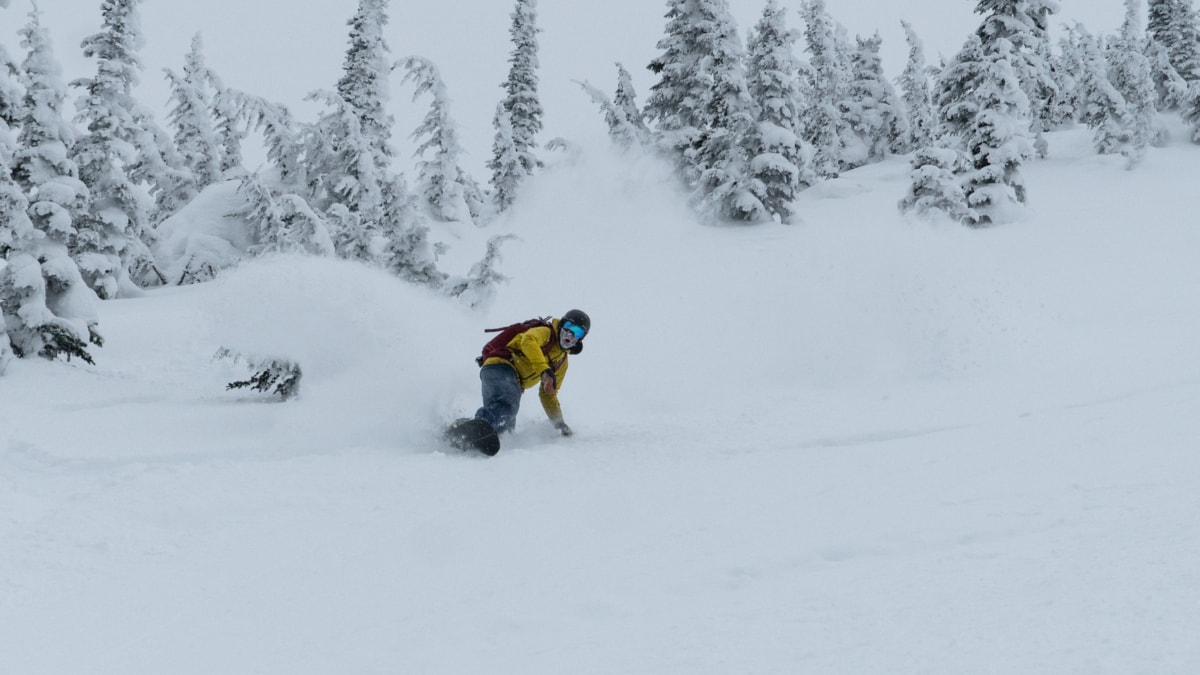
1. Grizzly Trees
Grizzly Trees is extremely popular… for good reason. It’s accessible, as close as it gets from the Discovery Center. It offers excellent fall-line skiing through open avalanche paths and nicely spaced trees. And, you can lap it twice (or even thrice) in a day or combine it with either Puff Daddy or Rogers Run. The uptrack takes you through some magical old-growth forest along the Grizzly Shoulder’s crest. It’s fairly exposed once you reach the treeline pitch topping out the ascent. While it’s quite busy during the high season, it’s possible to get the freshest of tracks with an early start. Hunting for the good lines, you’ll find plenty of pillows and deadfall booters across the slidepaths. Just remember that Grizzly Trees is classified as avalanche terrain and requires careful consideration when navigating its epic slopes. In the early and late seasons, watch out for the brutal alders patches at the base of the route.
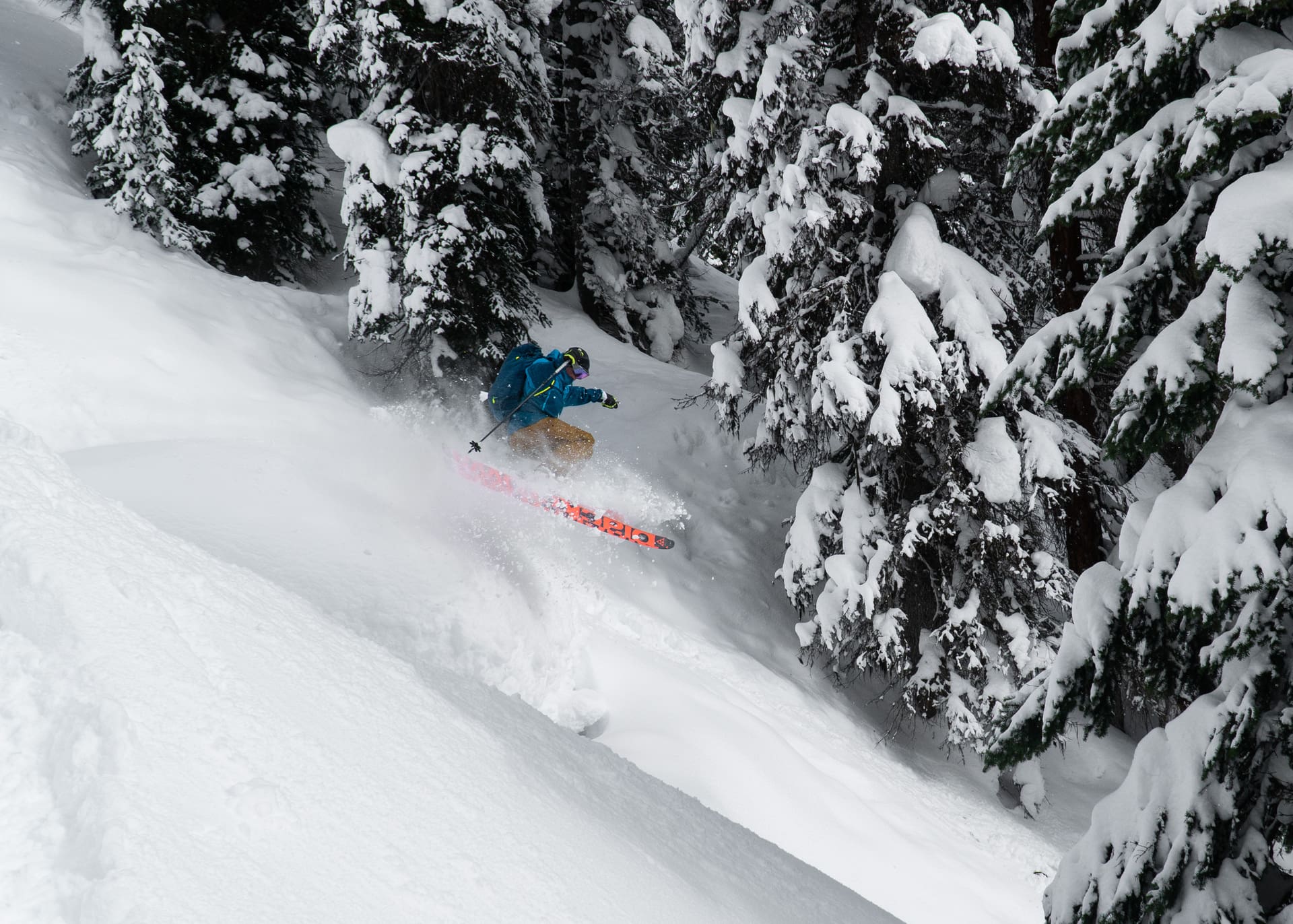
So I’ve showcased a few routes summarizing some of the best storm skiing found at Rogers Pass. Obviously, there are so many more quality options but I’ll leave it to you to seek them out. After all, I can’t reveal all my secrets. See you on the slopes!
For more cool routes, check out the route map. It’s your one-stop shop for Rogers Pass ski touring beta.
